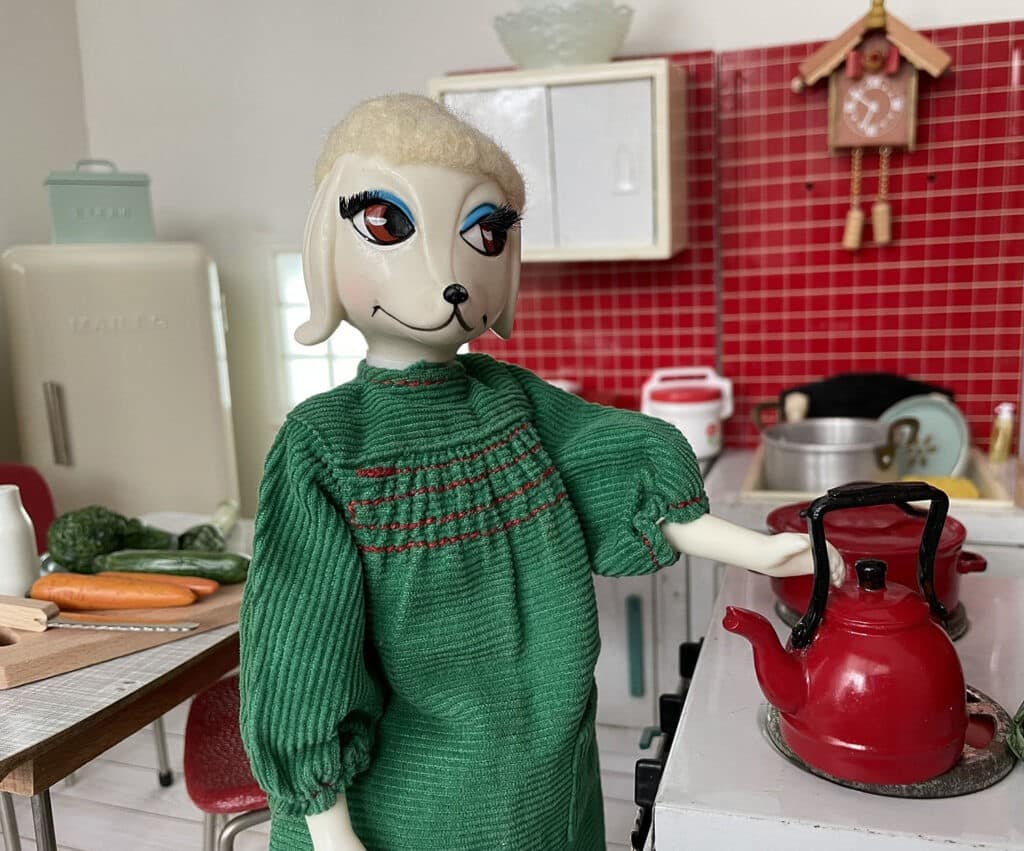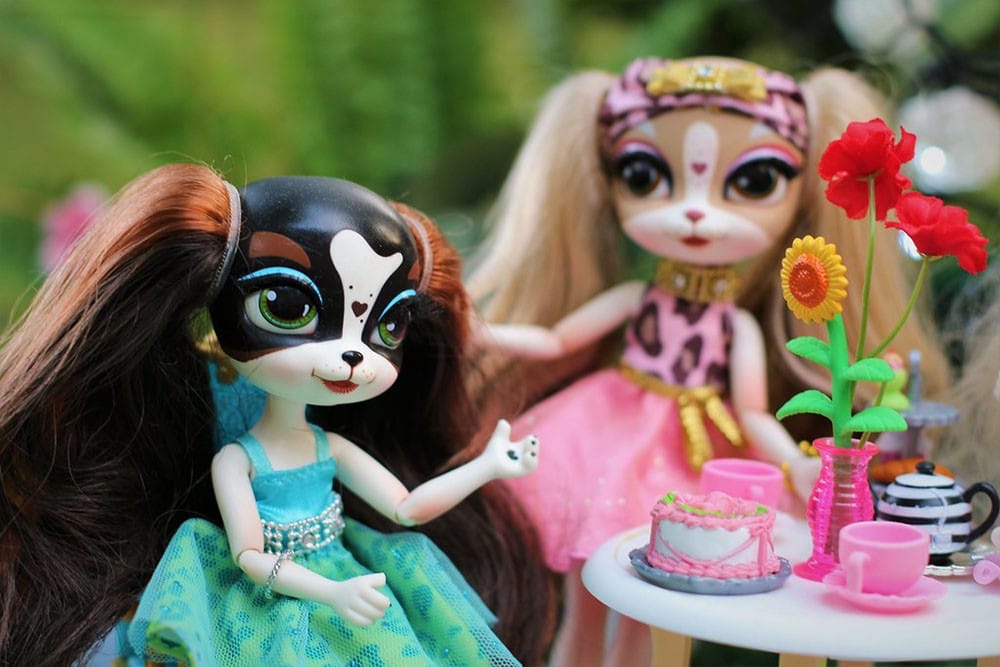
The Strong recently acquired a few anthropomorphized fashion dolls. A dog with a human-like body and an extensive wardrobe is really something to behold. As much as I admired these dolls, I could not help but to ask why did these show-up in the toy aisle and were they successful?
Giving human characteristics to animals has existed for centuries. Ancient gods were frequently presented as hybridized human-like animals. In the 18th and 19th centuries, as naturalists discovered and classified new species of birds and animals, children’s book illustrators reflected an interest in the personality of animals. During the same period, the rise of the urban middle class led to the emergence of modern pet keeping of a variety of species. People who had little contact with working or wild animals tended to romanticize both nature and animals. In La Chatte Blanche (The White Cat), Marie-Catherine d’Aulnoy wrote about a cat who is dressed in various miniature outfits suited for different occasions. Some children and women took to dressing their pets in clothing, which is still a favorite pastime for many, especially social media influencers (your veterinarian might advise against this). Modern research suggests that people who are lonely or who experience social anxiety are more inclined to attribute human-like emotions to their pets. Yet, researchers warn not to put too much stock in your dog’s look of shame, as they probably do not realize they misbehaved. In my limited research, I did not find much on why Peteena, Pinkie Cooper, or Enchantimals Hawna Huskey hit the market.
In 1966, Hasbro, Inc. produced a fashion doll with the head of a Poodle. Peteena was a “pace setter,” a “swinger,” and a “bit on the wild side.” While many dolls served as a single aspect of self-adornment, Peteena encouraged pampering. Her wardrobe included various styles such as “Surf’s Up,” a lime green polka dot bikini, coordinating hat, and yellow sandals, and “Zero Cool,” a lime green and aqua jumpsuit, jacket, skis, hat, and gloves. Other outfits were “Campus Capers,” “Oh La La,” and “Twinkle Toes.” Hasbro only produced Peteena for a brief period, but she remains a popular commodity for adult collectors. The Peteena flickr group, “a place to post photos of the bizarre yet utterly fabulous Peteena the Pampered Poodle,” has more than 6,500 photographs to browse. The photographer of one of my favorites, “Turning on the Kettle,” detailed all the supplies she used to create the shoot. These included Blythe doll shoes, handmade tights, Maileg produce, and vintage miniatures. The meticulous details demonstrate the seriousness of play for many collectors.

Pinkie Cooper and the Jet Set Pets, another line of fashion dolls with the head of a dog, were designed by Carter Bryant (creator of Bratz dolls) and his sister Anjanette Abell and developed by The Bridge Direct in 2013. Bryant wanted to create a doll that was sweet and “more sophisticated, glamorous, and not as edgy” as the Bratz line. The designers decided to create a doll that looked like Abell’s cocker spaniel, Pinkie Cooper. The line also included Ginger Jones, an expert designer with the fashion mantra “a smile is the best accessory,” and Pepper Parson, a famous DJ with the refrain “don’t be afraid to break the rules!” Pinkie, Ginger, and Pepper attended the World of Original Fashion (WOOF) school, had a passion for fashion, and had their own dogs (think Mickey Mouse with Pluto—confusing) Lil’ Pinkie, Sprinkles, and Saltine. While there are some avid fans of these jet setters, the line was not nearly as successful (or controversial) as Bratz dolls. In some ways, I am pleased to see a fashion doll that allows for hair and fashion play but does not objectify women.
With Enchantimals, Mattel took the popular animal aesthetic of social media filters and married it with a product and stories that encouraged friendship and empathy. Mattel described Enchantimals as a “group of lovable girls who have a special bond with their animal friends, and even share some of the same characteristics.” Hawna the Husky has pointy ears, a bushy gray tail, and whiskers. Bree Bunny has pink ears and a cottontail. Sage Skunk has a black and white tail and white markings on her face. Through social media, the brand promotes the idea of caring for all creatures. In the stop-motion video, “How to Care for Animals,” various Enchantimals demonstrate ways to care for a critter such as making sure “their tummies are full” and “provide love and attention.” The messages seem reminiscent of Victorian parents and moralists who felt that pets helped children to cultivate virtues.
Other anthropomorphic fashion dolls in the museum’s collections include Mattel’s Gorgeous Creatures, Madame Alexander’s French Kitty Ooh La La, and Lanard’s Catwalk Kitties. Looking at the history of anthropomorphic characters, it was only a matter of time before they became toys. Whether you’re a dog person or a cat person, it’s fun to find the play in the absurd.
By Michelle Parnett-Dwyer, Curator


